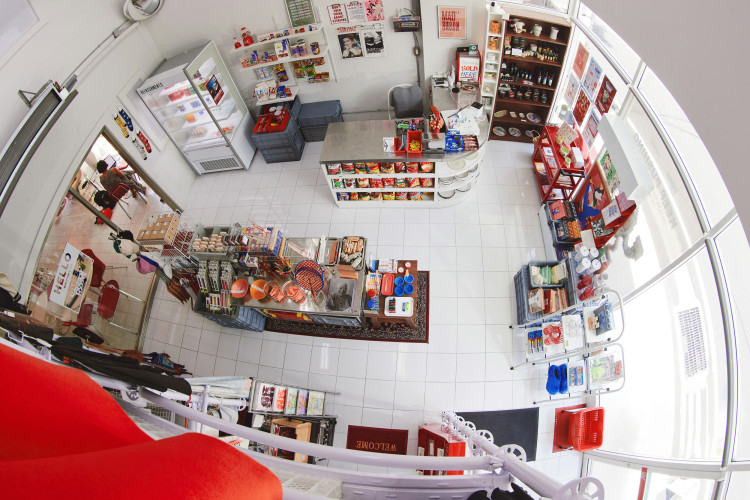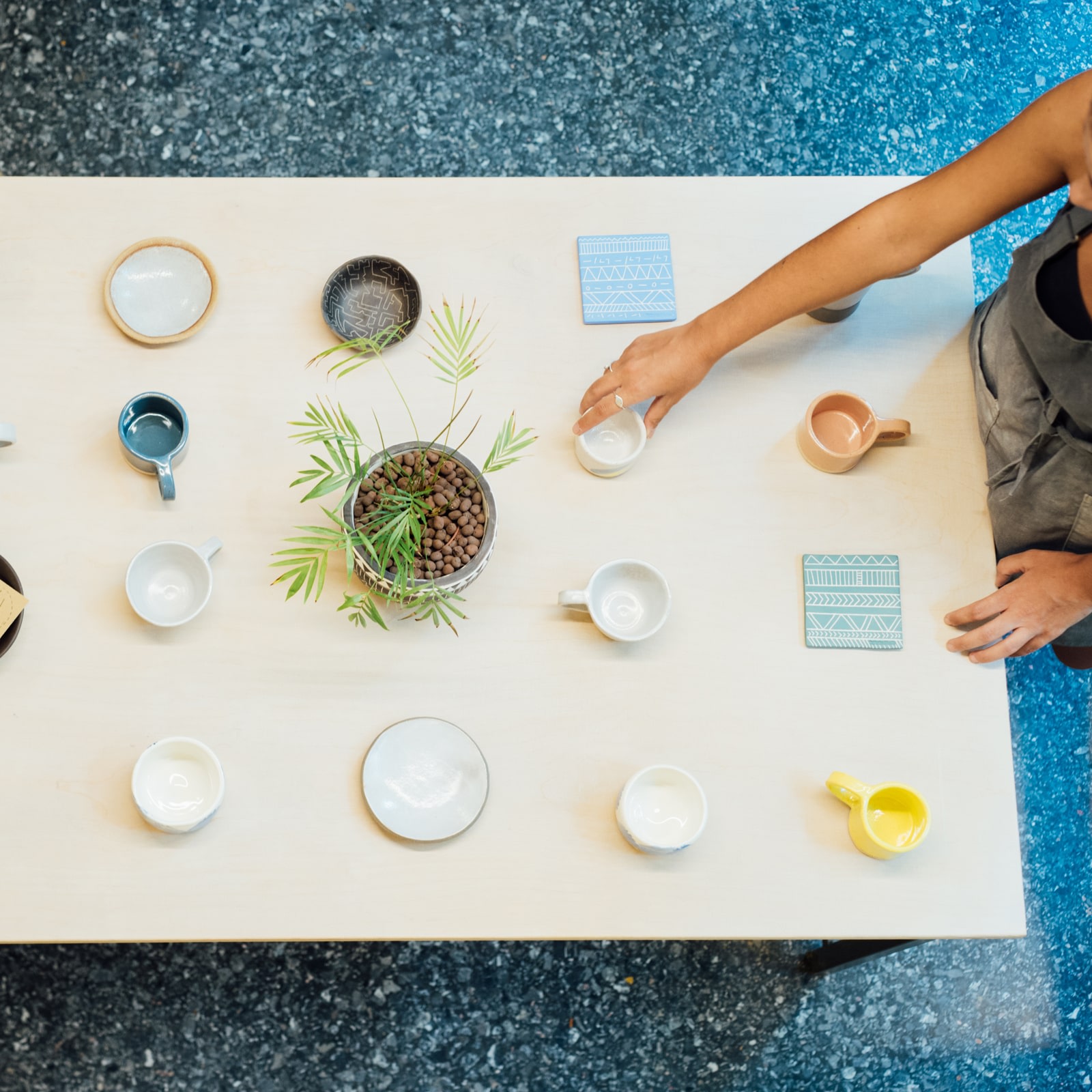
The world of data gets a bad rep. The average person might think of rooms filled with computers, screen after screen of cold, dull, sterile spreadsheets. Thankfully, Mona Chalabi’s work couldn’t be further from that.
Over the past few years, her colorful data illustrations have set her apart from the usual kinds of bods who crunch numbers for a living. She’s attracted an entirely new and much younger audience. After all, not many other data journalists have nearly half a million Instagram followers. Even fewer can say they are the executive producer and creative director of an upcoming animated TV show with Ramy Youssef. And none have a book about how we talk about money optioned by the much-hyped film studio A24 for a documentary series.
On top of that, earlier this year the 36-year-old won a Pulitzer Prize for an illustrated report on the stupidly vast wealth of Jeff Bezos – becoming the second Iraqi to win the prize after architect Zaha Hadid, and one of only several Arabs in history. (‘I normally joke that the only Iraqis with any degree of public visibility are me and Saddam Hussein,’ she says, laughing. ‘But I guess Zaha as well, then.’)

From her home in New York City – although she was raised across the pond in east London, by Iraqi immigrant parents – Mona describes her work as ‘rehumanizing’ data. She uses playful drawings to advocate for change, publishing illustrated charts breaking down statistics that tackle hot button topics such as smoking rates, the gender pay gap, climate change, police brutality and, most recently, ‘the system of oppression used by the Israeli government against the Palestinian people’. At the heart of all her work: people.
Take a recent Instagram post identifying the main causes of food poisoning. The guilty food groups are each represented by people doubled over, their pools of vomit stretching down the graph to their number value. Another post compares the number of white supremacists arrested following the US Capitol attack (relatively few) to the number of Black Lives Matter protestors arrested since George Floyd’s murder (a lot). They are chillingly depicted via row upon row of handcuffed fists and, looking at them, it’s not hard to feel a strong sense of indignation.
‘I think anger is really underrated,’ Mona tells Courier. ‘I’d describe myself as an angry person. It’s something I didn't embrace for a long time because I think I felt quite ashamed of it. But it’s an active feeling which propels me to do things.’
She continues: ‘I think data has always been a foundation for activism. It’s relevant that I grew up in a household where both my parents were doctors, because medicine is deeply informed by data. And some of the injustices in medicine that exist are because of disparities about where, and who, the data is collected from, and which communities are counted in that.’


The topics that Mona tackles can be something a newspaper or a private organization simply asks for. ‘Although if you write to me and say, “Hey, there’s a famine happening in Tigray and no one seems to give a shit,” I’ll try to pick it up,’ she says. ‘Generally, though, I’m driven by the things that I feel.’
For all of Mona’s success, there wasn’t a straightforward route into data visualization. After studying International Relations at the University of Edinburgh (which she pursued to ‘study the thing that felt prestigious and to get a good job’), she earned a master’s degree in International Security at Sciences Po in Paris. As part of her master’s program she took a six-month work placement in Jordan at the UN’s International Organization for Migration, creating data visualizations about Iraqi Internally Displaced Persons and refugees. This was where she started to use data in a professional capacity, but felt frustrated at how the data was being shared. ‘So the allure of journalism started even back then,’ she says.
After attending a one-day workshop with the Frontline Club in London, she started an internship with the Guardian and later went full-time there. But when Mona moved to the US to work for the ESPN-owned editorial platform FiveThirtyEight, an organization she says was ‘run by white men’, she quickly became disillusioned with the ‘detached’ nature of the work. She says she had the feeling that people ‘didn’t really get that the information they’re looking at represents real people's lives.’
At her lowest point, she developed insomnia and began doodling, like she did when she was a child. ‘I remember in one of the early ones, I was curious about the percentage of people that use tampons versus sanitary towels. I drew a tampon in some ketchup to show the percentage, and I posted it online to less than 100 Instagram followers.’
As the likes and followers started pouring in, she says it felt like external validation that she was doing something meaningful. The rest, as they say, is history.

For any given project, Mona will work on dozens and dozens of drafts before she settles on a finished illustration. First she sketches on paper, then she traces over it in pen. Later she works on digitizing it. A finished illustration can take anywhere from 20 minutes to several weeks (like the Pulitzer-winning Jeff Bezos piece of work, for example).
From her home, Mona shows what her starting point looks like: a densely populated excel spreadsheet, with rows of information, then tabs breaking down more subsections. Much of her job hinges on her choosing what information she finds the most relevant and important, and then to relay that information in the least confusing and most digestible way. ‘I felt this so strongly during Covid,’ she says. ‘If I'm creating data visualizations that are going to be affecting people’s behavior, their impressions about whether or not vaccines work, or affecting their views on masking – well, I better fucking get it right.’
While Mona has carved out a career that most people might not know ever existed, there are downsides. ‘I work a lot,’ she says. ‘I don't want to glamorize this kind of life because that volume of work isn’t sustainable in the long term. I’m exhausted; I work seven days a week.’
Even so, she says, ‘I’m in this incredibly privileged position where I love, love, love what I do. And as you get older, you realize what a fucking privilege it is. There’s so few people who really love their job.’
The A24 show has been particularly rewarding. Titled #1 Happy Family USA, the show charts ‘the experiences of a Muslim-American family that must learn how to code-switch as they navigate the early 2000s: a time of fear, war and the rapid expansion of the boy-band industrial complex.’



By now, she’s been working on the show on and off for three years. ‘I designed the main cast, the first 15 to 20 characters,’ Mona explains. She’s excited to work on something for her community, but also feels the pressure of doing so. ‘There hasn’t been that much made for Arabs, but also Muslims – two huge circles in this Venn diagram and I happen to occupy both of them. So I feel like there’s so much responsibility to get it right, which is also really fucking unfair. It's like a white guy who’s playing a role doesn’t feel like, “Oh my God, the burden of representing white men!’’’
For anyone trying to follow Mona’s career path, she’s reluctant to give advice because she’s the kind of person who ‘never takes it’ herself. But she’s clearly someone who loves learning, observing that ‘journalists are genuinely quite curious people.’ When pushed, she adds: ‘Stubbornness. If you’re going to be stubborn and not listen to advice, go for it. Just do you.’
Mona is aware of the gravity and consequences of the type of work she does. She admits she has made peace with pressure – so long as the reward means she continues to make a positive impact for underrepresented communities. ‘When you're writing things and you're putting them out into the ether, sometimes you don’t even know how many people are reading them. It’s really easy to be, like, this doesn't make a difference anyway.
‘But as soon as you start to feel that disillusionment,’ she continues, ‘it changes your relationship with your work. And actually, it's good to keep feeling that pressure – to write every piece as if it could potentially change someone's life.’



